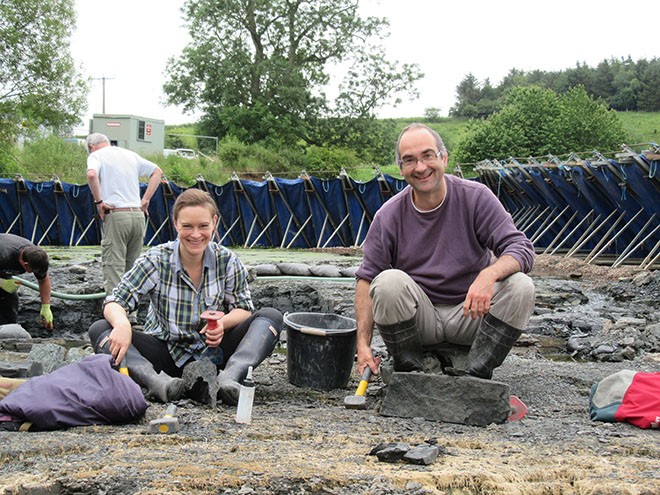I am an administrator with an MA in history. My working day normally consists of general financial and administrative duties. I know very little about palaeobiology. But after almost five years working with palaeobiologists in the Natural Sciences department at National Museums Scotland, I have been given the opportunity to get out of the office and go on my first dig.
Some of the team have been involved in the NERC-funded TW:eed (Tetrapod World: early evolution and diversity) research project, working with colleagues from the Universities of Cambridge, Leicester and Southampton and the British Geological Survey to study fossils and their environments from around 350 million years ago.
This was a significant time in the evolution of life on Earth as tetrapods (limbed vertebrates) were beginning to move from water onto the land. Until recently little was known about this process due to a 20 million year period known as Romer’s Gap from which very few fossils had previously been found. However, this now looks set to change as significant discoveries in the Scottish Borders by the late fossil collector Stan Wood, now acquired by the National Museums Scotland, have started to shed light on this gap. Fieldwork as part of the TW:eed project was planned to give researchers a chance to explore this site further. And it has given me a chance to see first-hand some of the fascinating work done by my colleagues.
Day One
So recently I accompanied Head of Natural Sciences Nick Fraser to the site on the River Whiteadder near Chirnside. It was beautiful, the sun was shining and birds were singing. I could definitely get used to life out of the office!
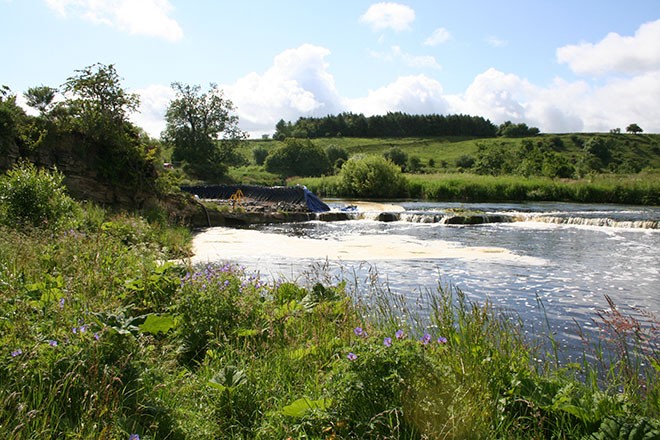
At the site, alongside staff from National Museums Scotland were colleagues from Leicester and Cambridge, a researcher from Glasgow School of Art’s Digital Design Studio doing a 3D laser scan of the dig site and handyman Derek from Rodgers Builders. After deciding which section of the site to work on, everyone got stuck in. Living by the adage that a ‘clean site is a happy site’, Nick and Derek worked to get rid of any excess water and rubble and to expose the next layer of slabs. Not often you see the Director of Collections beavering away with a brush in hand!
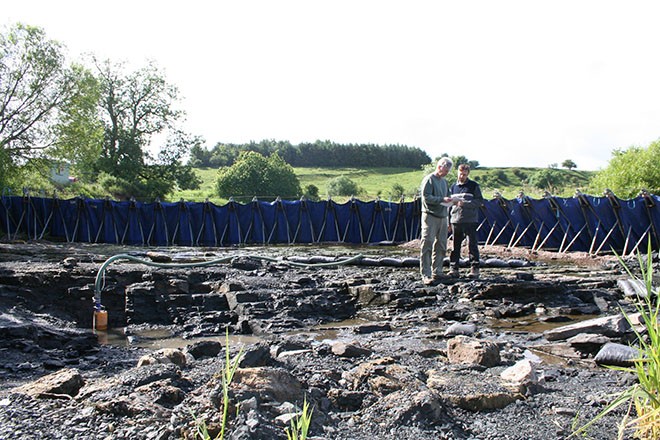
The bed was split into sections and numbered so material could be identified according to where it came from. Once the slabs had been removed, a hammer and chisel were used to split them and hand lenses were at the ready to examine what was found. Staff had to be quite selective about the material as there was an abundance of it. Some rocks, for example, were covered with beautiful plant stems so only the best examples and most interesting specimens were kept. It is a pity some had to be discarded but there was simply too much to prepare and take away.
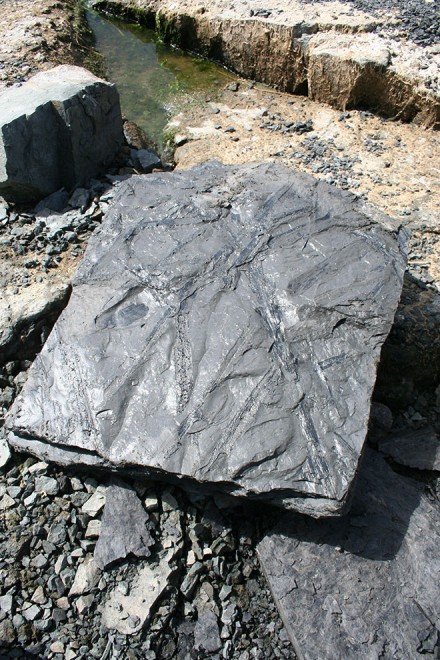
When specimens are identified to be kept they are coated in a consolidant (diluted glue) to ensure that they don’t crumble when they dry out. Some of the slabs are transported whole to be prepared in the lab rather than risk breaking them on site. They are then wrapped for transporting back to Edinburgh, where they will be kept in temporary storage before being taken to the museum to be quarantined, prepared and curated. I spent the afternoon working with Vicen Carrio, Curatorial Preparator, observing and helping with this process, and learning some of her many clever tricks such as wrapping some of the particularly fragile pieces in old bandages!
For half an hour I finally managed to get my hands on a hammer and chisel before the heavens opened and we had to call it a day. I couldn’t wait to return.
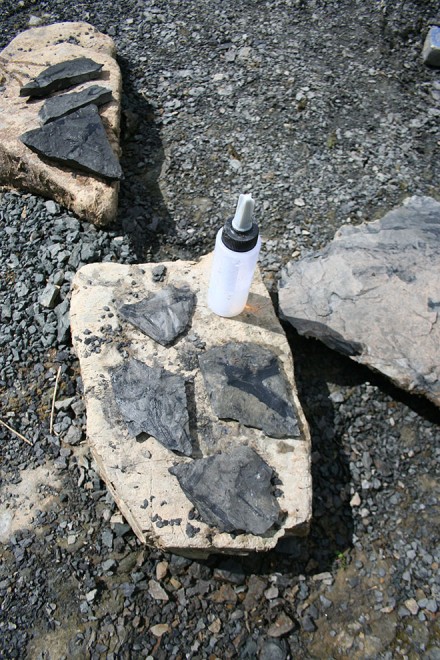
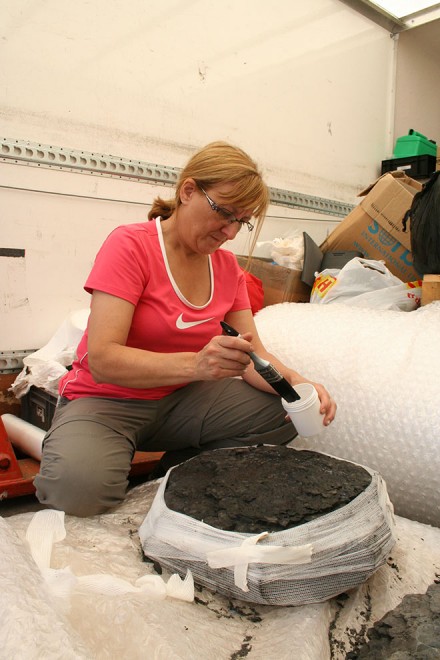
Day Two
The weather was lovely again and I was really excited to get stuck in. Rather than observing and being site photographer, this time I was allowed to help split the rock. Again, decisions had to be made about what to take, especially as this was the last week and there wasn’t going to be much time to examine what was found. It was decided that some of the slabs from the potentially most significant areas would be taken whole to be examined back at the National Museums Collection Centre.
I was terrified to begin with that I would break the rock in the wrong place, potentially damaging the fossils inside, but soon realised that some force is needed. If you don’t break the rock in the first place you’ll never find anything. My other main concern was having little idea what I was looking for. What if I discarded something significant, not realising its value? So much of the day was spent with: ‘Is this something?’ or ‘Should we keep this?!’ Thankfully I quickly got my eye in and eventually started finding a few bits and pieces. Nothing which is going to blow away the world of palaeobiology but very exciting for me.
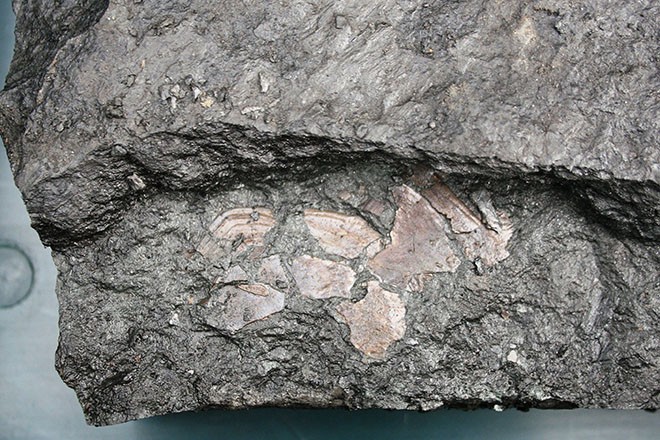
The mudstone is fairly easy to split. You have to try and find existing cracks to follow. I soon discovered there is a real knack to this. Yves, working next to me, seemed to have it down to a fine art and could split slabs beautifully with seemingly little effort. Despite working all day on it I think I need more practice! It’s back to my desk for now but next time…
